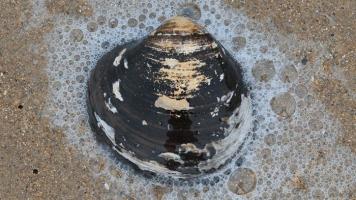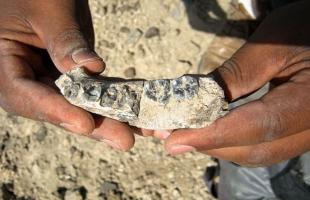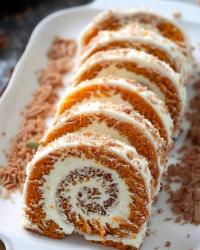Copy Link
Add to Bookmark
Report
HOMEBREW Digest #2645

HOMEBREW Digest #2645 Tue 24 February 1998
FORUM ON BEER, HOMEBREWING, AND RELATED ISSUES
Digest Janitor: janitor@hbd.org
Many thanks to the Observer & Eccentric Newspapers of
Livonia, Michigan for sponsoring the Homebrew Digest.
URL: http://www.oeonline.com
Contents:
Re: Mash water calculations (Spencer W Thomas)
Haze Gray And Underway... (jamorris)
Re: Long Secondaries (Michael Satterwhite)
15 vs 30 amps (Tom Lombardo)
Hop Plant Identification (Denis Barsalo)
Halves and Halve-Nots / I'll take 15A over 30A any day? (KennyEddy)
Recap of PET bottle - Label removal ("David Russell")
Re: Heater Elements (Steve Scott)
Aussie Hops (not kangaroo either) (Brad McMahon)
Hazy Beer ("Little, Wayne")
Pickles and Botulism / Power and Voltage (Kyle Druey)
African or European swallow? (David Kerr)
Winners of the 1998 Boston Homebrew Competition and MCAB qualifiers (Ken Jucks, ph # 617-496-7580)
Palate Fatigue (Nathan_L_Kanous_Ii)
Comics / Sparging model: membrane or diffusion or what? (David C. Harsh)
Carbon Filters (Andrew Quinzani)
Carbon Filters with Well Water (MAB)
Re: Water Chemistry Question (Stephen J. Van der Hoven)
Re: Long Secondaries ("Paul Hockings")
Pantyhose/nylon hops bags (tlrkirk)
Heater Elements ("RANDY ERICKSON")
Water Chemistry (MAB)
Spent Grain Dog Bones / Dry ("Andrew Avis")
Iodophor Sanitizing Effect: How Long Does It Last? (Lynn & Mike Key)
Mummies; long secondaries (Samuel Mize)
my protein rest test (Al Korzonas)
Re: Wheelchair Brewing (Kirk Lund)
Roaster Oven Mashing (feldman)
NOTE NEW HOMEBREW ADDRESS: hbd.org
Send articles for __publication_only__ to post@hbd.org
(Articles are published in the order they are received.)
If your e-mail account is being deleted, please unsubscribe first!!
To SUBSCRIBE or UNSUBSCRIBE send an e-mail message with the word
"subscribe" or "unsubscribe" to request@hbd.org.
**SUBSCRIBE AND UNSUBSCRIBE REQUESTS MUST BE SENT FROM THE E-MAIL
**ACCOUNT YOU WISH TO HAVE SUBSCRIBED OR UNSUBSCRIBED!!!
IF YOU HAVE SPAM-PROOFED your e-mail address, the autoresponder and
the SUBSCRIBE/UNSUBSCRIBE commands will fail!
For "Cat's Meow" information, send mail to brewery@hbd.org
Homebrew Digest Information on the Web: http://hbd.org
Requests for back issues will be ignored. Back issues are available via:
Anonymous ftp from...
ftp://hbd.org/pub/hbd/digests
ftp://ftp.stanford.edu/pub/clubs/homebrew/beer
AFS users can find it under...
/afs/ir.stanford.edu/ftp/pub/clubs/homebrew/beer
JANITORS on duty: Pat Babcock and Karl Lutzen (janitor@hbd.org)
----------------------------------------------------------------------
Date: Mon, 23 Feb 1998 00:30:53 -0500
From: Spencer W Thomas <spencer@engin.umich.edu>
Subject: Re: Mash water calculations
In response to a question by Lars Bjornstad,
>>>>> "Hubert" == Hubert Hanghofer <hhanghof@netbeer.co.at> writes:
Hubert> [Notes that we have to factor in the thermal mass of the tun.]
Hubert> That all seems logical so far but why do you hit mashing
Hubert> in temp but not further infusions?
When water is added to dry malt, heat (of "slaking" in English) is
generated. It is possible that in Lars's system, the slaking heat is
close to the heat absorbed in heating the mashtun.
=Spencer Thomas in Ann Arbor, MI (spencer@umich.edu)
------------------------------
Date: Mon, 23 Feb 1998 11:43:22 +0300
From: jamorris@washington.navy.mil
Subject: Haze Gray And Underway...
Good to see a shipmate on this list. I'm on the George Washington
eagerly waiting to get home to NC and brew that first batch! This list
is a little advanced for me, but I'm picking up things here and there.
Enjoy your 'beer on the pier' in Jebel Ali.
Ron Morris
CVN 73
- --------------
From:
Subject: Mail Order Supplier Wanted or Help in Japan
Fellow Brewers,
I am fairly new to the list and a first time poster. I enjoy the
list
and am learning lots. I have brewed a few batches of extract pale
ales and wheat beers which turned out well but was recently
transferred to Yokosuka, Japan. I am presently underway on the USS
Independence in the Persian Gulf and want to brew some more when I
return to Japan. My question is can someone supply me with a list
of
email addresses for mail order sources on the west coast of the
U.S.
and/or any source of supplies in the Tokyo/Yokohama area of Japan.
Thanks,
Paul
------------------------------
Date: Mon, 23 Feb 1998 05:51:41 -0600
From: Michael Satterwhite <satterwh@weblore.com>
Subject: Re: Long Secondaries
>Date: Sun, 22 Feb 1998 20:43:03 -0800
>From: Paul n Shelley <pracko@earthlink.net>
>Subject: Long Secondaries
>
>I don't get it. A LOT of recipies call for an initial 5-10 primary
>fermentation and then for a lengthier fermentation in a secondary.
>Following this, the recipes usually call for packaging and priming with
>corn sugar. What I don't understand, and have NEVER been able to
>achieve, is successful natural carbonation of a beer after it has been
>in a primary and/or secondary for longer than about two weeks. Usually
>the yeast has completely autolysed by this point and can no longer
>reproduce due to the alcohol content. Has anyone been successful at
>bottle conditioning their beers after a long (14-20 day) fermentation
>without use of additional yeast? Why do recipes call for such a lengthy
>secondary fermentation when corn sugar is being used as a primer? I can
>see the benefits of conditioning a beer in the secondary for a long
>time, but that's only if you have a CO2 tank to force carbonate it with.
I routinely leave my beer in the secondary for 14 - 21 days, sometimes
longer. I've never had any problem with bottle conditioning. I add the corn
sugar (or DME) solution, gently stir, bottle and cap. The yeast takes it
from there.
"Congress shall make no law...abridging the freedom of speech"
http://www.weblore.com/soapbox
------------------------------
Date: Mon, 23 Feb 1998 05:57:39 -0600
From: TomL@ednet.rvc.cc.il.us (Tom Lombardo)
Subject: 15 vs 30 amps
Joe Chang writes:
I would rather get zapped by 15 amps than 30 amps any day..
Well, you wouldn't know the difference, since it only takes about 20
*milliamps* (that's 0.020 Amps) to kill you. 15 Amps would fry you just as
easily as 30. (Although it might be the difference between open and closed
casket.)
Tom (in Rockford IL)
------------------------------
Date: Mon, 23 Feb 1998 07:27:38 -0500
From: Denis Barsalo <denisb@CAM.ORG>
Subject: Hop Plant Identification
Hop growers,
I have 4 different plants in my yard. I know that one of them is a
Cascade, another a Perle. I seem to remember someone giving me an American
Hallertaur (Liberty?) and the last one is maybe a Tettanang or a Nugget, I
don't quite remember.
I need someone to suggest a good book, or text or something that
will help me identify these plants so that I can label them properly on a
site plan. I noticed *some* differences in grown pattern, leaf pattern, hop
size and color; so there must be a way to identify these for sure. Even the
two most prolific plants, the Cascade and the Perle, I'm now uncertain as
to which is which. (I think the Perle produced larger flowers and leaves?)
Thanks for the help
Denis Barsalo
------------------------------
Date: Mon, 23 Feb 1998 08:23:26 EST
From: KennyEddy@aol.com
Subject: Halves and Halve-Nots / I'll take 15A over 30A any day?
Drunkenbastard Sulley asks:
This goes back a few years, but I always thought that
Watts = Volts x Amps
Which leads me to think that if you cut voltage in half, and feed the
same amperage, you'll cut the wattage in half. Am I missing something
here? I hereby disclaim any knowledge of the workings of electricity;
the stuff causes me shocking experiences. I'm just hoping that
everything I know isn't wrong.
True, Watts = Volts x Amps. And it's also therefore true that if you force
the same current through a load at half the voltage you get half, not a
quarter, of the power. However, this forcing of a fixed current is not what
happens electrically. We end up with a fixed *voltage*, and we have a fixed
*resistance* (that of the element), so the current changes accordingly.
Follow along:
Start with the Ohm's Law equation I = V/R (resistance is fixed)
At 240V:
Current @240V = 240V / Resistance
At 120V:
Current @120V = 120V / Resistance = 1/2 x Current @240V (eqn. 1)
Your Equation:
Watts @240V = Current@240V x 240V
So at 120V:
Watts @120V = Current@120V x 120V
which (substituting eqn. 1) can be written as
Watts@120V = 1/2 x Current@240V x 1/2 x 240V
which (rearranging collectingthe "1/2"s) can be written as
Watts@120V = 1/4 x Current@240V x 240V
So for a fixed resistance, halving the voltage also halves the current, half
time half is a quarter, and there you have it.
*****
Joe Chang adds:
The major difference/advantage between using 240V over 120V is the amount
of amps. A 120V motor drawing 30 amps will only pull 15 amps on a 240V
circut. I would rather get zapped by 15 amps than 30 amps any day... If
you want to run a 240V GFI circut, you can pick up a GFI circut breaker
at a spa shop for about 100 bucks.....
Yikes! It only takes a few MILLIAMPS (thousandths of an amp) to stop your
heart. The reason we don't die when we test a 9V battery on our tongues is
that the skin resistance of our bodies is quite high, and the low voltage
generates only a very low current through the skin. Were you to attach a
battery to an open cut on your left hand and an open cut on your right hand
(DO NOT DO THIS!), you might actually feel the result similarly to the tongue
effect, or, you might die as the miniscule milliamps travel through your heart
on the way from one hand to the other. If you've ever accidentally felt the
jolting effects of a 120V line, consider yourself lucky that your dry skin was
only allowing a few MILLIONTHS of an amp through your body. 15A versus 30A is
totally moot.
*****
Ken Schwartz
El Paso, TX
KennyEddy@aol.com
http://members.aol.com/kennyeddy
------------------------------
Date: Mon, 23 Feb 1998 08:22:30 -0500
From: "David Russell" <drussel3@ford.com>
Subject: Recap of PET bottle - Label removal
Thanks to all that responded. Here is a recap of my attempts. Soaking in
dishwashing soap (Cascade) overnight was unsuccesful. Soaking overnight in
ammonia solution did not work either (1/2 c. to 4 gallon water). I did not try
TSP as was another suggestion.
Goo-Gone, although a Citrus based cleaner, did contain petroleum products, of
which I wanted to stay clear, same with WD-40. I did though use De-Solv-It.
This is also a Citrus based cleaner, but contained only organic ingredients,
as per the label.
I filled each bottle with hot tap water, peeled as much of the label off as I
could. I then sprayed a little De-Solv-It on a rag, and removed the remaining
label and adhesive. I then placed the bottle in a dishwashing soap (Cascade)
solution and then cleaned and rinsed the outsides of the bottles. On to orange
pop making with the kids.
- --
David Russell drussel3@ford.com Plymouth, MI
------------------------------
Date: Mon, 23 Feb 1998 08:47:12 -0500
From: sscott@lightlink.com (Steve Scott)
Subject: Re: Heater Elements
>After Ken Sullivan contemplated cutting the voltage in half on his
>4500W/240VAC and 1500W/240VAC heaters to get 2250/120 and 750/120, Ken
>Schwartz said that "Running a load on half the voltage QUARTERS the
>power." and offered Power = Voltage-Squared/Resistance as the proof.
>
>This goes back a few years, but I always thought that
>
>Watts = Volts x Amps
>
>Which leads me to think that if you cut voltage in half, and feed the
>same amperage, you'll cut the wattage in half. Am I missing something
>here? I hereby disclaim any knowledge of the workings of electricity;
>the stuff causes me shocking experiences. I'm just hoping that
>everything I know isn't wrong.
Nope, but you're not going all the way. The resistance stays the same
so if the voltage changes so does the amperage. The formula that you
also need is:
I equals V/R
I equals amps
V equals volts
R equals resistance
So, for easy figuring, if a 240V W/H element draws 20 amps the
resistance is 12 (20A equals 240V/12R). Now that the resistance is
known you can figure that in the 120V example I equals 120V/12R or I
equals 10A. So with your formula
240V X 20A equals 4800W and
120V X 10A equals 1200W.
If the resistance stays the same and the volts (or amps for that matter)
change then the amps (or volts) have to change as well.
------------------------------
Date: Tue, 24 Feb 1998 00:11:06 +1000
From: Brad McMahon <brad@sa.apana.org.au>
Subject: Aussie Hops (not kangaroo either)
>Home hop growers in Australia and New Zealand, I'm searching for
>a source of Hop cuttings. I've tried just about every avenue and can
>only get wild or ornamental hops (with no idea of breeding). Any help
>appreciated, as is any variety of brewing hop.
Ausbeer #15 (Sept/Oct 97) has a classified ad for hops:
Pride of Ringwood and American Cluster plants available
with full growing instructions and climbing strings.
$19.50 includes packaging and posting
Tasmanian Hop Growers Pty Ltd
PO Box 124
Scottsdale TAS 7260
fax 03 63522304
Cheques and common credit cards accepted.
No affiliation nor contact with aforesaid company.
- --
Brad McMahon Adelaide, South Australia
brad@sa.apana.org.au
PGP
------------------------------
Date: Mon, 23 Feb 1998 08:41:41 -0500
From: "Little, Wayne" <LittleW@od31.nidr.nih.gov>
Subject: Hazy Beer
Amen to Carl Shipman's comments on hazy beer. The best microbrew I've had to
date comes out of Theo DeGroen's Baltimore Brewing Company--all unfiltered!
------------------------------
Date: Sun, 22 Feb 1998 22:04:50 -0800
From: Kyle Druey <druey@ibm.net>
Subject: Pickles and Botulism / Power and Voltage
Fellow HBDers,
Looks like the pickle bucket fermenter thread is gaining momentum just
like the dreaded botulism thread of last year. You might try soaking
the bucket in baking soda and water. The baking soda is supposed to
have some odor absorbing/(adsorbing?) properties. I dumped a small box
of this stuff in a used keg that reaked of root beer, seemed to work
just fine. Perhaps if the pickle juice is not adequately removed from
the plastic it may lead to botulism in the finished beer? (Just
kidding, please don't respond to this!)
**************************
How is it that when you take a 240V electric heating element and run
120V through it you only get 1/4 of the power, when all you have done is
cut the voltage in half? As it turns out, Power is proportional to the
voltage squared divided by the resistance:
P = (V)^2/R
If the power is then halved going from 240V to 120V you now get:
P = (1/2 V)^2/R = 1/4(V)^2/R
So you can see that now the original power is 1/4 what it was when you
ran 240V through it.
Not too bad for a nonpracticing ME.
Kyle Druey
Bakersfield, CA
------------------------------
Date: Mon, 23 Feb 1998 08:59:43 -0500
From: David Kerr <dkerr@semc.org>
Subject: African or European swallow?
Kevin TenBrink wrote:
> Secondly, I think the last English Unit of measure that home brewers and
> beer drinkers the world over will be the most reluctant to relinquish is
> the pint.
British Imperial (20 oz.) or U.S. (16 oz.) pint?
Dave Kerr, Needham, MA
------------------------------
Date: Mon, 23 Feb 1998 10:02:38 -0500
From: jucks@cfaft4.harvard.edu (Ken Jucks, ph # 617-496-7580)
Subject: Winners of the 1998 Boston Homebrew Competition and MCAB qualifiers
Results from the 1998 Boston Homebrew Competition
21 Febrewary 1998, Somerville MA
Organized by the Boston Wort Processors
An MCAB Qualifying Event
* denotes the MCAB Qualifier
(note that the MCAB qualifier is not necessarily the beer that is ranked the
highest of that sub-style for the category. For categories that had more
than one flight in the preliminary round, the MCAB sub-style was placed
in a separate flight if possible, and the MCAB qualifier was determined
there. The second round determined the final placement for the category.
Other categories required multiple flights of MCAB entries and the MCAB
qualifiers were determined in the second round.)
American Light Lager
1) Michael Branigan, Coventry RI, American Light
2) Thomas Plunkard, Warren MI (Ann Arbor Brewers), Pre-Prohibition *
3) Ann Whyte, Essex Jct. VT (Green Mountain), Pre-Prohibition
European Light Lager
1) Ken Weber, Winchester MA (Boston Wort Processors), Helles *
2) Dean Goulding, Mansfield MA (Boston Wort Processors), Bohemian Pils
3) George Fix, Arlington TX, Helles
Light Ale
1) Alan Baublis, Belchertown MA (Barley Hoppers), Kolsch
2) Thomas Miklinevich, Monroe CT (Underground), Kolsch
3) John Seckler, Portsmouth NH (Seacoast), Kolsch
other) Adam Contos, Boston MA, American Wheat *
Bitters
1) David Parr, Winchester MA (Boston Wort Processors), Ordinary *
2) Dan Marshall, Burlington VT (Green Mountain), strong
3) Roger Sleigh, Worcester MA, ordinary
Scottish Ale
1) John McCafferty, Winchester MA (Merrimack Valley), Export 80 *
2) John Zelazny, Webster NY (Upstate NY), Export 80
3) Thomas J O'Connor III MD and Satan, Rockport ME (MALT), Export 80
Pale Ale
1) Chris Lavoie, Glenmont NY, American *
2) Scott Snider, Arlington MA, British
3) John Murphy, Medford MA, American
IPA
1) Brad Johnson, Lennox MA (Berkshire) *
2) Chris Lavoie, Glenmont NY
3) Clifford Timpson, Milton VT (Green Mountain)
Altbier
1) Ann Whyte, Essex Jct VT (Green Mountain), Dusseldorf *
2) Geoff McNalley, Tivertown RI, Dusseldorf
3) Tom Miklinevich, Monroe CT (Underground) Dusseldorf
Amber Lager
1) Michael Nagel, Holden MA, O'fest *
2) Thomas J. O'Connor III MD and Satan, Rockport ME (MALT), O'fest
3) Tom Plunkard, Warren MI, O'Fest
Brown Ale
1) Chris Lavoie, Glenmont NY, American *
2) Bill Nevits, Hudson MA (Wizards), Mild
3) Alan Baublis, Belchertown MA (Barley Hoppers), Mild
Strong Ale
1) Dan Marshall and Cliff Timpson, Milton VT (Green Mountain), Old Ale
2) Christopher Tkach, Newmarket MA, Old Ale
3) Steven Lefebure, Colchester VT (Green Mountain), Barleywine
other) Stu Talman, Rochester MA, (Boston Wort Processors), Barleywine *
European Dark Lager
1) John McCafferty, Chelmsford MA (Merrimack Valley), Scharzbier
2) Tom Miklinevich, Monroe CT (Underground), Dunkel *
3) Markus Brache, Dedham MA (Boston Wort Processors), Schwarzbier
Bock
1) Brian Myers, Norman OK (High Plains Draughters), Eisbock
2) Jeff Flood, Boston MA (Boston Wort Processors), Traditional
3) Randy Reed, Stoughton MA (South Shore and Boston Wort Processors),
Traditional
other) Steve Lefebure and Joe Connolly, Colchester VT (Green Mountain),
Dubelbock *
Porter
1) Ben Janowski, Oyster Bay NY (Bonwit), Robust *
2) Cliff Timpson, Milton VT (Green Mountain), Brown
3) John Zelazny, Webster NY (Upstate NY), Robust
Stout
1) John Murphy, Medford MA, Dry
2) Thomas Miklinevich and John Watson, Monroe CT (Underground), Oatmeal
3) Rod Bender, Elizabeth PA (Brew Masters), Dry *
Wheat
1) Steve Stroud, Medford MA (Boston Wort Processors), Bavarian *
2) Cliff Timpson, Milton VT (Green Mountain), Bavarian
3) Tom Miklinevich, Monroe CT (Underground), Weisbock
Strong Belgian and French Ale
1) Dave McCart, Somerville MA (Boston Wort Processors), Tripel *
2) Thomas J. O'Connor III MD and Satan, Rockport ME (MALT), Tripel
3) Thomas Miklinevich, Monroe CT (Underground), Dubbel
Other Belgian Ale
1) Francois Espourtoille, Lakeville MA (South Shore), Lambic *
2) Gary Harstead, Mahwah NJ, Lambic
3) Brian Myers, Norman OK (High Plains Draughters), Wit
Fruit Beers
1) Charlie Grahm, Everett MA (Boston Wort Processors), Choc. Rasp.
2) Chekar Nimkar, Lynn MA (Boston Wort Processors), Cherry Strong Ale
3) Stu Tallman, Rochester MA (Boston Wort Processors), Rasp. Imp. Stout
Spice/Herb/Vegetable
1) Jim Wagner and another Wagner, Pasadena MD, Spice Ale
2) Ben Jankowsky, Oyster Bay NY, Clove, ginger, other spices
3) Mike Hahn, Salt Lake UT (ZZ Hops), Coffee Stout
Cider
1) Fred Sterner, E. Freetown MA (Boston Wort Processors), New England style
2) Brett Schneider, Framingham MA (Boston Wort Processors), Cranberry cider
3) Adam Contos, Boston MA, Sparkling
Best of Show
1) Francois Espourteille, Lakeville MA (South Shore), Lambic
2) Steve Stroud, Medford MA (Boston Wort Processors), Bavarian Weizen
3) John Murphy, Medford MA, Dry Stout
------------------------------
Date: Mon, 23 Feb 1998 10:17:24 -0400
From: Nathan_L_Kanous_Ii@ferris.edu
Subject: Palate Fatigue
This it probably best suited for the Judge's group, but I don't know how to
submit to their list server. Anyhow, I'm curious about palate fatigue and
personal experiences. As I read about beer tasting and evaluation, one
thing that is reported to occur is palate fatigue. The more bitter beers
you drink, the less able you are to detect bitterness in a beer. Let's get
down to the nitty gritty. I feel that I begin to detect subtleties of
flavor best after I've "had a few". I don't mean at 3:00 am on a Saturday
after imbibing since noon on Friday, just that after I've had a couple of
glasses of beer, I feel that my senses begin to detect more of the subtle
flavors in beer. They seem more identifiable to me. Am I nuts? Maybe I
shouldn't ask it like that, what experiences have others had? Private
e-mail is fine to avoid slowing down the digest. TIA
Nathan in Frankenmuth, MI
------------------------------
Date: Mon, 23 Feb 1998 10:28:34 -0500
From: David.Harsh@uc.edu (David C. Harsh)
Subject: Comics / Sparging model: membrane or diffusion or what?
Dave Burley took the opportunity to trash Chemical Engineers and their
abilities with respect to chemists. The truth of his opinion is no doubt
supported by the myriad of job opportunities for chemists and the lack of
same for chemical engineers. ;)
- ---------------------
For modelling sparge, Lou Heavner and Dave Burley have been writing:
LH> I suspect that the whole sparging process is more like baffled
LH> convective flow than any other model proposed....
LH> The husks surely act like baffles more than mebranes...
DB>Convective flow is concentration/thermal gradient driven.
DB>I think of it as a plug flow model driven by gravity with a
DB>diffusion from capillaries.
Well, as a PhD comical engineer, here's my take on it..
First, definitions: convective flow is due to an imposed flow, whether due
to a pressure gradient (in our case gravity) for forced convection or a
density gradient for free convection. Concentration and thermal gradients
result in mass and heat transfer, respectively, either by molecular
(diffusion/conduction) or convective processes.
We have two processes occuring in the sparge, diffusion out of the grain
particle through the stagnant fluid in and near the husk (this would be a
Fickian process). Then once the sugar has diffused through the stagnant
fluid into the mobile fluid, it is tranferred through the pores of the
grain bed by the bulk flow. I don't know of any evidence to support this,
but I would also suspect that there is some adsorption of sugars on the
grain surface, which would mean an adsorption equilibrium would also be
involved and the amount of sugar remaining on the surface decreases with
local concentration in the liquid phase.
The sparging starts with uniform concentration everywhere and pure
(relatively) water being introduced at one end of the bed. The difference
in concentration between the inside and outside of the grain causes
diffusion out of the particle, and a zone of "depleted" grain starts to
form from the top down through the bed during the sparge process. This
unsteady state feature is probably what makes this difficult to model (a
steady state process between two phases in a packed bed is a relatively
basic problem in our undergrad coursework).
Of course, I'm still wondering what the goal of all this is - particle size
is a big variable (or capillary length if you look at it that way); there
will be a distribution of sizes/lengths that would have to be accounted for
or assumed to be uniform. (Remember the engineer joke, "well assuming a
spherical horse.." ?) When we're done, we'll have a complicated model with
parameters that are unmeasurable. "full of sound and fury, signifying
nothing" comes to mind.
Seems like what we really have here is an elution chromatography process
(i.e. see Helfferich's Multicomponent Chromatography), but I'll admit that
I haven't really thought that through. Any takers?
Dave
Dave Harsh
Bloatarian Brewing League, Cincinnati, OH
Everyone has a photographic memory. Not everyone has film.
O-
------------------------------
Date: Mon, 23 Feb 1998 10:41:22 -0500
From: Andrew Quinzani <quinzani@mdc.net>
Subject: Carbon Filters
>Louis Gordon asks:
>"If I use an activated carbon filter to remove chloramines, will it
also
>remove minerals that I need to be adding back with brewing salts."
Do not use carbon filters, While it may filter out undesired taste it
harbors some things that will kill the yeast. I talked to a water filter
company severl months ago as I work in a bakery and asked about carbon
filters. I forgot exactly what it was that was in the carbon but I was
told that it would effectively kill any yeast.
-=Q=-
- --
"Q" Brew Brewery...Home of Hairy Chest Ale
- ------------------------------------------------------------
quinzani@mdc.net
------------------------------
Date: Mon, 23 Feb 1998 10:41:53 -0500
From: MAB <mabrooks@erols.com>
Subject: Carbon Filters with Well Water
The use of a carbon fliter on well water, IMO, is not necessary.
Surely in any water supply system bacterial populations will form on
just about any type of growth medium, even the insides of your pipes to
some extent (when growth gets too heavy it just breaks away) - this is
not an area to be concerned about. People with chlorinated water dont
have this problem in their water supply system per se, but anyone who
has a carbon filter (which removes chlorine) will always have a
bacterial population on the carbon media and in any piping that follows.
This "Bacterial Film" will die off as the media becomes exhautsted from
chlorine contact. As carbon removes the chlorine from the water
"clears the way" for bacterial film growth - ie. the front end of the
carbon filter will not contain bacteria but the back end, over time,
will develop a bacterial film. Some filters have an "antibacterial
media" spread throughout the carbon to prevent this buildup, however
these types of filters much more expensive.
Instead of using carbon I would recommend using food grade tubing if you
"must" have a hose type setup, better yet - just fill some 5 gallon
cubitainers (avail. at the camping/outdoors store).
Good Luck,
Also you may want to take a sample of your well water to a County
Agricultural Extension Office for metals/inorganics analysis, this
service used to be free in the past, but you may want to check first.
------------------------------
Date: Mon, 23 Feb 1998 10:52:38 -0500
From: vhs@ornl.gov (Stephen J. Van der Hoven)
Subject: Re: Water Chemistry Question
Gregg Soh had a question about water chemistry and as a geochemist and
someone who researches the chemistry of ground water, I felt obligated to
answer. I suspect that the term "ppm" is being substituted for "mg/kg"
(milligrams per kilogram) in the texts that you are looking at. The two
terms are often interchanged, but shouldn't be. As Gregg pointed out, ppm
is a measure of the number of molecules while mg/kg is a measure of mass.
By the way, chemistists always use mg/kg or another measure of mass to
avoid the confusion that ppm seems to be causing. If you are bored by math
and chemistry, then you may not want to read further.
Taking Greggs example of 1 gram of CaSO4 dissolved in 1 gallon of distilled
H2O, I will first calculate the concentration Ca based on units of mass.
1 gal = 4.546 liters = 4546 ml (milliters) H2O
assuming 1 ml H2O = 1 gram then, the mass of 1 gal of H2O is 4546 g (4.546
kg).
The molecular weight of CaSO4 is 136 g/mole (40 g for Ca and 96 g for the
SO4 molecule). Therefore the mass of Ca in one gram of CaSO4 is:
1 g CaSO4 X (40 g Ca/ 136 g CaSO4) = 0.294 g Ca (or 294 mg).
294 mg Ca dissolved in 4.546 kg H2O = 64.7 mg/kg, close to the 61 "ppm"
value quoted in texts. Following same logic for SO4, the concentration is
1 g CaSO4 X (96 g SO4/ 136 g CaSO4) = .706 g SO4
706 mg SO4/ 4.546 kg H2O = 155.3 mg/kg, also close to the reported 147 ppm
value.
If the concentration of Ca is calculated based on the number of molecules,
the number is different. The number of molecules in 1 gal of water is:
4546 g H2O / 18 g/mole H2O = 252.56 mole H2O
The number of moles of CaSO4 in 1 g CaSO4 is:
1 g CaSO4/ 136 g/mole CaSO4 = 0.0074 moles CaSO4.
Since CaSO4 dissolved in water into the Ca ion and the SO4 molecule, there
are an equal number of moles Ca and SO4 dissolved the water. Also since
there are an equal number of molecules in a mole of water as in a mole of
CaSO4, you can leave Avagadros Number out of any calculation. So,
0.0074 moles Ca / 252.56 moles H2O = 0.00002911 moles Ca per 1 mole H2O.
Multiply 0.00002911 by 1,000,000 and you get 29 ppm Ca.
If you followed this lengthy explanation, I hope it illustrates the
difference between ppm and mg/kg and explains why they are not
interchangeable. As I said earlier, chemists always use mg/kg, but when I
see ppm outside of scientific literature, I usually assume that what is
really meant if mg/kg.
This says nothing about what happens to the chemistry in the mash where all
kinds of reactions take place. But that is probably irrelevant because I
think the point is that the water added at the beginning of the boil should
be of a certain chemistry to obtain the desired results. Having said all
that, I personally brew with whatever comes out of the tap and enjoy the
finished product regardless of hte initial water chemistry.
- ----------------------------------------------------------
Stephen J. Van der Hoven
Environmental Sciences Division
Oak Ridge National Laboratory
P.O. Box 2008, Mail Stop 6400
Oak Ridge, Tennessee 37831-6400
Phone: 423-241-5178 FAX: 423-574-7420
e-mail:vhs@ornl.gov
- ----------------------------------------------------------
------------------------------
Date: Mon, 23 Feb 1998 08:05:41 -0800
From: "Paul Hockings" <phocking@pacifier.com>
Subject: Re: Long Secondaries
Date: Sun, 22 Feb 1998 20:43:03 -0800
From: Paul n Shelley <pracko@earthlink.net>
Subject: Long Secondaries
>Has anyone been successful at
>bottle conditioning their beers after a long (14-20 day) fermentation
>without use of additional yeast? Why do recipes call for such a lengthy
>secondary fermentation when corn sugar is being used as a primer?
Hi All,
I recently have had this same question and dilema, I created an all-Grain
Vienna Bock
on December 1rst::. OG 1.065 Primary took 18 days including about 2 for D rest,
I racked
into my secondary and dropped it down to about 34 deg. for 14 to 17 days, about
3 days before
bottling I added 2 tsp of PolyClar. Bottled and let it set at 70 deg. for
about 6 days. Then put into
the garage which is about 40 to 50 deg. Just like the books say. 14 days later
my beer is
completely flat, briliantly clear but flat. So I wait another 2 weeks, still
flat. I get discouraged
about mid February and decide to dump the whole lot and fill the bottles with
Ale. I get my
dumping bucket and bottle opener and head to the garage. Low and Behold each
bottle I open
has a Beautiful head. Needless to say none of my Bock went into the Bucket.
So I guess the moral of the story is to be patient.
I shall Dump No beer younger than a year...
Paul
------------------------------
Date: Mon, 23 Feb 1998 11:31:17 -0800
From: tlrkirk <tlrkirk@wam.umd.edu>
Subject: Pantyhose/nylon hops bags
Just a suggestion -- why don't you use cheesecloth? At <$1.00 (US) a
yard it is much more economical than using nylons (if bought new at at
least $2 a pair, usually more). A better reason, I think, for using
cheesecloth is that it is intended for use with food so you don't have
to try to get all the dye (gross) out of it or worry about where it's
been (grosser) before you put it in your brew. You can get little
packets of cheesecloth at most kitchen stores and grocery stores, but
the most economical way to buy it is at your local fabric store. It's
cheap, it's easy, and it's meant for food.
TLR
------------------------------
Date: Mon, 23 Feb 1998 09:00:45 -0800
From: "RANDY ERICKSON" <RANDYE@mid.org>
Subject: Heater Elements
Don't you just love it when a topic you actually know something
about comes up?
Sully acknowledges Kenny Schwartz' assertion that Power equals
Voltage-squared/Resistance (P=V*V/R) but recalls that Power in fact
equals Volts X Amps (P=V*I). You are correct Sir! And given
the fact that Current also equals V/R, you can substitute V/R
into Sully's equation to get Kenny's.
Sully then theorizes that if you cut the voltage in half, and supply
the same current, power will only reduce by half as well, instead
of by 1/4 as Kenny says.
The math part is right, but not the electricity part. The constant
here is the resistance of the element, not the current. Given
that the element is 4500 W at 240 V, and given the equation
P=V*V/R, we can rearrange to get R=V*V/P or 12.8 Ohms.
That resistance will be essentially the same, regardless of the
applied voltage, so it's the current that'll have to adjust itself.
When we change to 120V, we get Power equals V*V/R equals
(120)*(120)/12.8 equals 1125 W.
So, for today at least, Ohm's law is upheld by this court ;-)
Randy in Modesto
------------------------------
Date: Mon, 23 Feb 1998 12:05:08 -0500
From: MAB <mabrooks@erols.com>
Subject: Water Chemistry
From: "Gregg Soh"
Subject: Water Chemistry
Greg,
ppm or mg/L is used extensively in the "water treatment field". This
unit of expression is equal to the "Weight" of the solute in a
solution (soln.). Some comments of interest for determining this:
1 mg/L = 1ppm (this applies to solns. not dry/dry measures).
Weight (in grams) of 1 mole of an element is called its Gram Molecular
Weight (GMW). When you look at a Periodic Table of the Elements the
number underneath the abreviation is the amount (in grams) needed to
equal 1 mole of that substance. Hence a 1 molar solution of Ca (GMW =
40) is equal to 40 grams of pure Ca dissolved into 1 liter of pure
water.
Formula Weight (FW) is the weight of the dry compound in grams. This
can be different then just adding up the GMW's of all the elements in
the compound because sometimes water is used in the makeup of the
compound ie. Anhydrous vs. heptahydrated forms of the same
"apparent" compound will have different FW. The compound MgSO4
(anhydrous version) weighs 120.37 = GMW, ie. 120.37 grams into 1 liter =
1 molar solution. However, if you buy MgSO4 heptahydrate you will need
246.48 grams to make the same 1 molar solution, with the extra weight
being added by 7 waters (126 grams). Bottom line is knowing what form
of a chemical you are buying and take into account any water in the FW.
Also, for calculating purposes:
To find out the weight of a compound you need to add to get a desired
level in your brew water just subtract the amount already in your water
from the desired level and this will be your makeup amount. Knowing
this you can determine the weight in grams needed to add to your water.
This is calculated by the following equation:
Lets use MgSO4 for an example,
Mg = 24.305 GMW - (from the periodic table)
S = 32.066 GMW " "
O = ~16 GMW " "
H = 1 GMW " "
Total for MgSO4 = ~120.4 GMW
Total for H2O = ~18 GMW
So for the heptahydrated form of MgSO4 the FW = ~246.4
Mg weighs 24.305 (we can use this to get a ratio):
1 gram of MgSO4 x 24.305/246.4 x 1000mg/1g x 1gal/3.784 liters
= 26 ppm (mg/l) is achieved when you add 1 gram of MgSO4 to 1 gallon of
pure water.
Since the above calculation uses alot of conversions to get the result
you could easily back calculate to find out how much you need to get to
a desired end amount in the water.
ie. you want 260 ppm(mg/l) of Mg in your water and have 100 ppm already,
then you need to add 160 ppm:
160 x 3.785 x 246.4/(24.305 x 1000) = 6.14 grams (= 6,140 mg)
Hence you would need to add 6 grams MgSO4 per gallon to get the extra
160 mg/l MgSO4 you want.
Hope this helps, as water chemistry is much more complicated then
measuring and mixing, what you add isnt necessarily what you get.
Matt B.
------------------------------
Date: 23 Feb 1998 09:49:04 -0700
From: "Andrew Avis" <Andrew.Avis.0519423@nt.com>
Subject: Spent Grain Dog Bones / Dry
Hello,
I don't want to resurrect the dogs eating hops thread, which I understand
was a problem a while back. In the spirit of the perpetual "what to do
with spent grain" question, I offer the following solution:
I dump my spent grains in a makeshift compost pile in my back yard. I've
noticed that my dog, Finnigan, and his friends like to munch occasionally
on the grains (I'm building a real composter to stop this practice). So
on Sunday, after brewing, I saved a bit of grain from the mashtun, and
came up with this recipe:
Pizza & Beer dog bones:
2 cups wet spent grain
1/2 cup pizza/pasta sauce
4 cloves garlic, crushed (I added 6, but Finn is a garlic lover)
1 egg
2 cups of any combination of whole wheat flour, corn flour, barley flour,
soy flour, or regular flour
Mix into a firm dough (I had to add a bit more flour to get it firm).
Roll out on a greased cookie sheet to about 1/4 - 1/8" thick. Cut into
wedges, or strips, or (if you're really creative) bones. Bake at 350F
for 30 minutes. Turn off heat, and leave in the oven over night to get
hard.
I imagine you could make peanut butter bones by substituting PB for pizza
sauce & eliminating the garlic.
A question: I met a guy yesterday who makes fantastic lagers using
Morgans Dry Lager Yeast. Does anyone know anything about this yeast? Is
it a true lager, or is it a neutral ale? The temp range was listed as
15C to 30C. Any speculation on the source (brewery) of this yeast? I
was really impressed with the flavour that it produced.
Drew
------------------------------
Date: Mon, 23 Feb 1998 12:47:03 -0500
From: Lynn & Mike Key <flakeys@ibm.net>
Subject: Iodophor Sanitizing Effect: How Long Does It Last?
After brewing I sanitize my CF wort chiller with a 12.5ppm iodphor
solution. I let it drain and then stuff sterilized gauze into each tube
end. This is how I store it. My question: how long will the sanitizing
effect of the iodophor last? Must I resanitize the wort chiller when I
brew again? Thanks.
- --
Cordially, Michael Key
"Extremism in the pursuit of prudence is no vice"--
Greasy Fingers, Chicago Gangsters
------------------------------
Date: Mon, 23 Feb 1998 11:58:45 -0600 (CST)
From: Samuel Mize <smize@prime.imagin.net>
Subject: Mummies; long secondaries
Greetings to all, and especially to:
> HOMEBREW Digest #2644 Mon 23 February 1998
> From: "David R. Burley" <Dave_Burley@compuserve.com>
> Subject: Enzyme Mortality
> How were dem dry bones preserved? Sodium carbonate
> ( natron) and wood tar ( which is loaded with phenolics and
> is antiseptic).
How much of each should we put into a 5 gallon batch?
> From: Paul n Shelley <pracko@earthlink.net>
> Subject: Long Secondaries
>... Has anyone been successful at
> bottle conditioning their beers after a long (14-20 day) fermentation
> without use of additional yeast?
Yep. I don't know why you're having trouble, unless you're always brewing
very strong beer.
>Why do recipes call for such a lengthy
> secondary fermentation when corn sugar is being used as a primer? I can
> see the benefits of conditioning a beer in the secondary for a long
> time, but that's only if you have a CO2 tank to force carbonate it with.
Yeast create waste products during heavy fermentation. When sugar gets
sparse, they turn to these for food. These waste products (like diacetyl
and higher alcohols) are not wanted in beer. A long secondary fermentation
lets the yeast clean up the taste for you. You prime with very little sugar,
compared to the original supply, so very little of these waste products are
created, and they are rapidly re-consumed by the yeast in the bottle.
Best,
Sam Mize
Multi-part MIME message follows:
" ", " ", " " -- Marcel Marceau
- --
Samuel Mize -- smize@imagin.net -- Team Ada
Fight Spam - see http://www.cauce.org/
Personal net account - die gedanken sind frei
------------------------------
Date: Mon, 23 Feb 1998 13:23:56 -0600 (CST)
From: Al Korzonas <korz@xnet.com>
Subject: my protein rest test
George writes:
Al says that if he gets a lot of break material without a protein
rest, the next time he mashes this malt he will use a protein rest to
minimize the break material.
Kunze seems to disagree with this. Break material is a good thing,
because it means that you have removed the larger proteins without
breaking them down into haze-forming middle weight proteins. Of
course, you should remove the break material...
Ahh, but I said that I use a protein rest if I get "excessive break" with
a particular malt. One person's "excessive" may be another's "not too bad."
To give you an idea of what I feel is excessive (something I should have
done in the first place!), I'll tell you what I got with DeWolf-Cosyns
Pale Ale malt when used with a single-step infusion at 155F... nearly
20% of the batch was clouded with thick, white globs of break. The bottom
gallon of the fermenter was filled with this fluffy stuff that looked like
wet cotton. Even if all that was to settle, I doubt there would have been
a way that I could have gotten more than 4.5 gallons out of the 5 in the
fermenter. I thought that was excessive.
A subsequent batch, in which I used a 15 min protein rest at 140F followed
by a boiling water infusion up to 155F, resulted in about a quart of break
in stead.
One additional point regarding your quoting of Kunze... he seems to equate
polyphenol (tannin) extraction with husks. That's not what I've read
both here (Charlie Scandrett, I believe) and in Malting and Brewing Science.
While most of the silicates are indeed in the husks, most of the
polyphenols are elsewhere (aleurone layer, I want to say, but don't
quote me). Overcrushing does increase both silicate and polyphenol
extraction as does sloppy laeutering, but just to be technically correct,
it's not the husks at fault regarding the polyphenols. MBS has a table
in which they show the difference between worts made from regular and
dehusked malt. The polyphenol levels in the dehusked malt wort were very
similar to those from the wort made from regular malt.
Al.
Al Korzonas, Palos Hills, IL
korz@xnet.com
My new website (still under construction, but up-and-running):
http://www.brewinfo.com/brewinfo/
------------------------------
Date: Mon, 23 Feb 1998 13:27:48 -0600
From: Kirk Lund <klund@technologist.com>
Subject: Re: Wheelchair Brewing
>3. Watching the boil. Whatever set up you have, you must be able to look
>into the pot to avoid a boil-over. Boil-over can happen quite quickly
There is a small, specially-shaped pyrex plate which keeps the wort from
boiling over. At first I had my doubts, but it actually works!
>13. Use dishwasher to sanitize bottles. The lower rack will pull out to
>you,
>simplifying the operation and is an effective method. Avoid having to
>bend over a water-filled 30+ gal container to clean bottles.
The dishwasher works great for this, but don't use dishwasher detergent,
esp. the "spot-free rinse" kind. It leaves a thin film on the glass that
will destroy beer head.
Good Cheer,
Home: kirklund@home.com
Work: klund@technologist.com
http://members.home.net/kirklund/
------------------------------
Date: Mon, 23 Feb 1998 15:25:03 -0500
From: feldman@lexmark.com
Subject: Roaster Oven Mashing
In short, my space in the apartment in which I live is limited. I recently
acquired (free of charge) a roaster oven. The temperature dial on the
roaster goes from 150 F on up. The roaster holds about 4 to 5 gallons of
water. Given my limited space, and the little amount of space that a
roaster oven occupies, it appears that this could be a feasible set up for
all-grain brewing in my apartment. I have several questions:
1. Has anyone ever converted a roaster oven into a mashing vessel? It
seems like it could be a great minimashing set up. If so how did you do
it?
2. Even if you haven't done this, do you have any ideas on how I could
achieve a decent setup for mashing grains?
3. How many pounds of grain can one mash per gallon of volume of the
mashing vessel?
I have a few ideas, but I am inexperienced in "all-grain gadgetry". Any
help wolud be appreciated.
Beers,
Bobby
B.O.C.K. (Brewers Of Central Kentcky)
------------------------------
End of HOMEBREW Digest #2645, 02/24/98
*************************************
-------





















